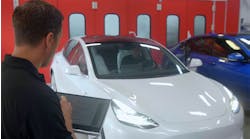The National Safety Council (NSC) announced Tuesday that 28 percent of traffic accidents—1.6 million—are caused by drivers using cell phones and texting.
Drivers using cell phones cause about 1.4 million crashes each year, and at least 200,000 crashes each year are caused by texting, according to the NSC.
"This new estimate provides critical data for legislators, business leaders and individuals to evaluate the threat and need for legislation, business policies and personal actions to prevent cell phone use and texting while driving," said Janet Froetscher, president and CEO of the NSC. "There was great progress made in 2009, particularly regarding a broad recognition that texting is dangerous. We now need the same broad consensus that recognizes cell phone use while driving causes even more crashes.”
Data from the National Highway Traffic Safety Administration (NHTSA) concludes 11 percent of drivers at any given time are using their cell phone—increasing crash risk by four times—while 1 percent of drivers are manipulating a cell phone in ways that include texting—increasing crash risk by eight times.
Public support for laws banning cell phone use while driving is now around 50 percent, according to Froetscher.
The NSC reports that wireless subscribers in 2009 had grown to 276.6 million, and 135.2 billion text messages are sent monthly.
Visit nsc.org for more data and information.


